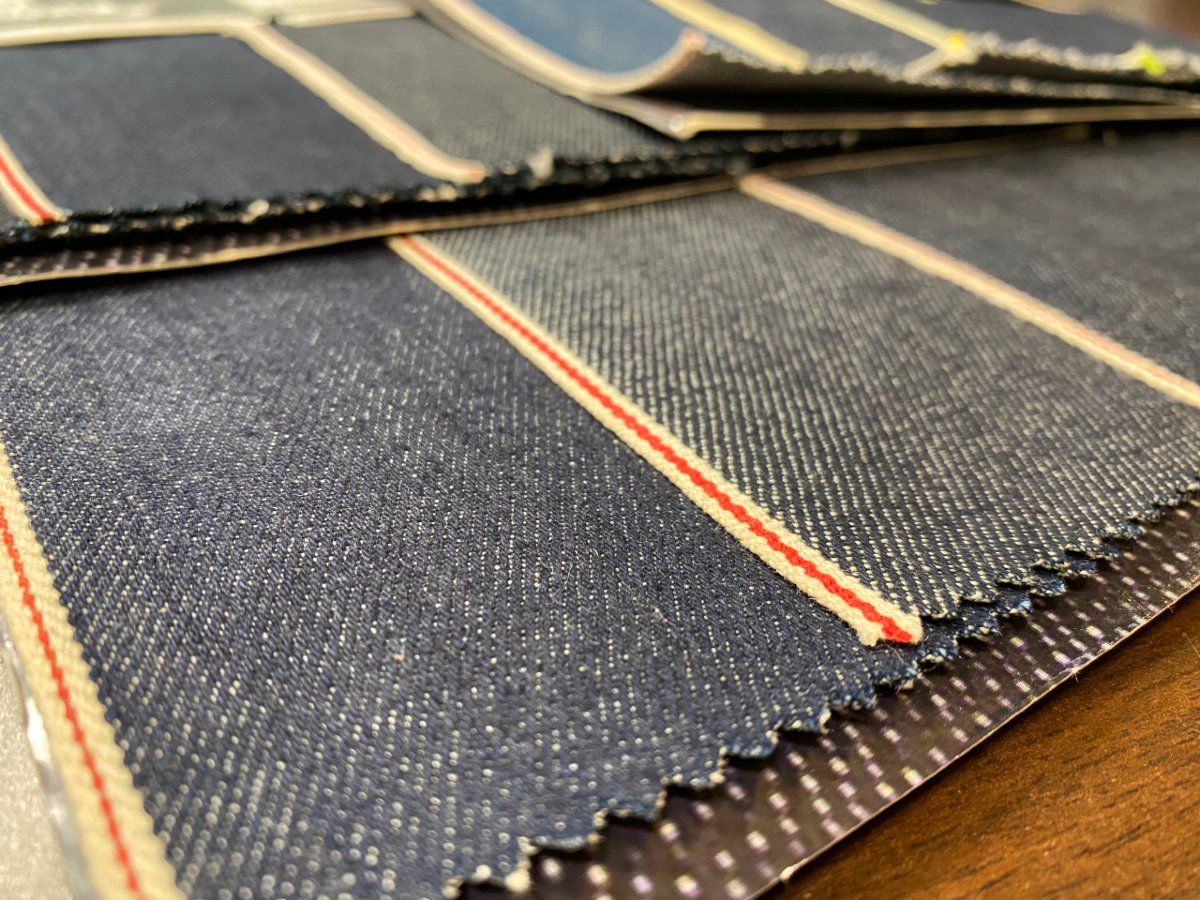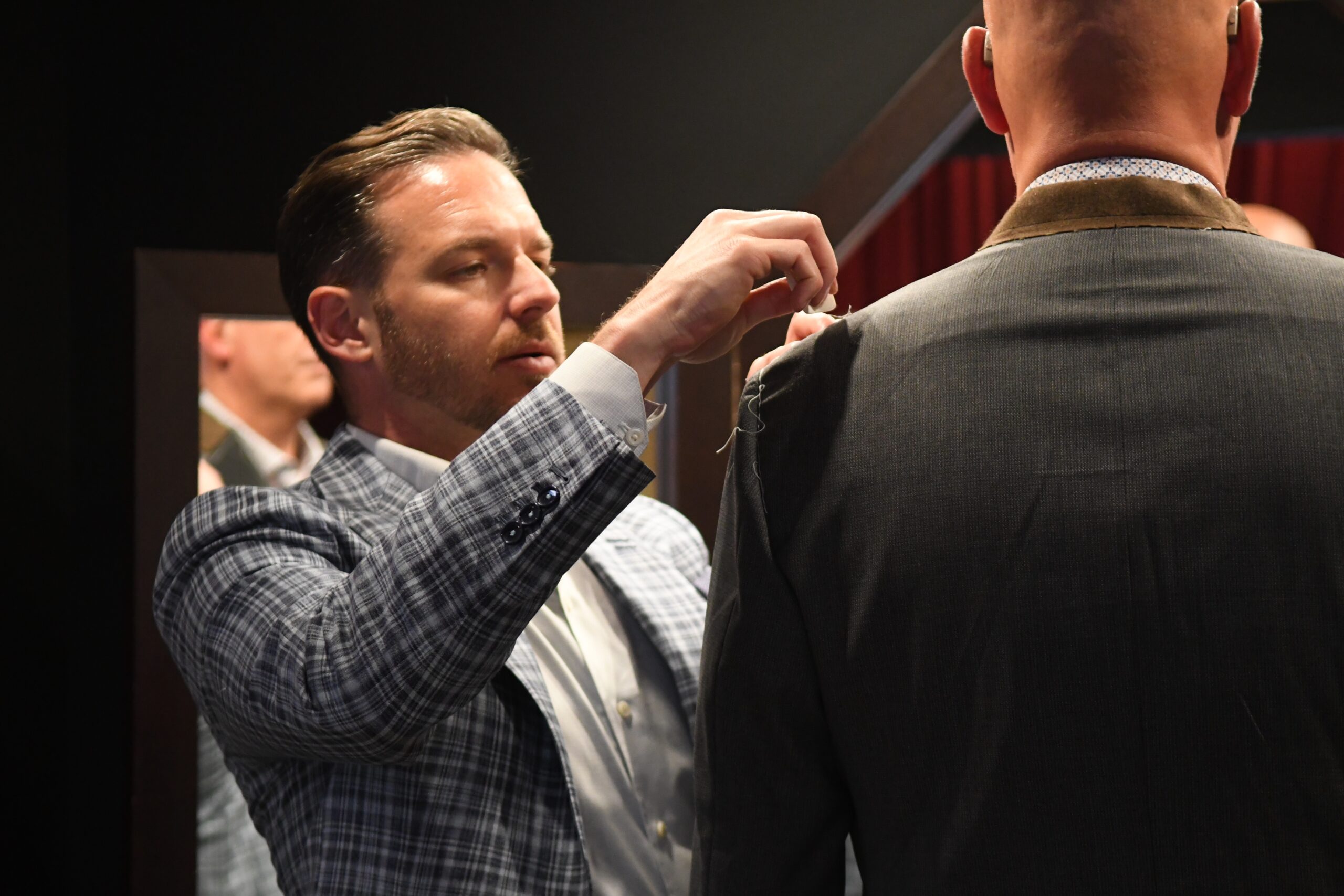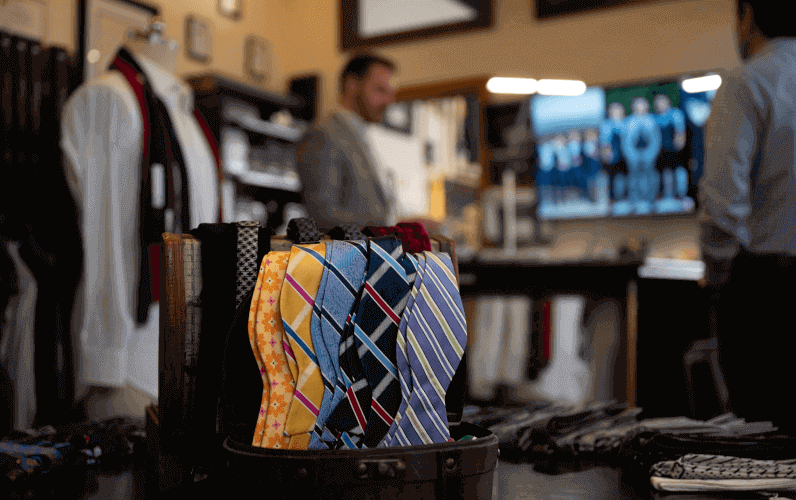The world has been heading in a more casual direction for thirty years or so. COVID-19 just happened to have sped things up. With more and more of our clients shifting their wardrobes from dressy to casual to adapt to a work-from-home lifestyle, we’ve wound up talking about jeans quite a bit at the shop. One question we hear often is, “What is selvedge denim?”
This post will tackle that question.
What Does Selvedge Denim Refer To?
Selvedge denim is highly prized among denim die-hards. This unique piece of clothing has a similar cult following to that of Air Jordans amongst sneakerheads – sizable but not huge, and fiercely loyal. What is it that makes selvedge denim so special?
First, let’s look at what selvedge denim actually is.
“Selvedge” is actually a portmanteau-cum-corruption of the words “self edge.” In the first half of the 20th century, nearly all denim (all fabric, even) was made on a piece of machinery called a shuttle loom. These looms were capable of producing one yard-wide rolls of tightly woven, heavy fabrics, the edges of which would come out finished. These finished edges were tightly woven bands that prevented fraying, curling, and unraveling. Because they came off the loom finished, they were referred to as having a “self-edge,” which is where we get the name from.
Nowadays, this tightly-woven edge is referred to as the “selvedge” even on non-denim products. The bolts of worsted wool we keep at the shop, for example, are all finished with this selvedge, which displays the name of the mill and specific fabric collection that piece of cloth comes from.
It’s typical to wear these jeans with a rolled-up cuff to show off the selvedge itself. You’ll sometimes see the selvedge on belt loops or at the top of the fifth pocket for a little added detail.
Selvedge vs. Raw Denim
Though they’re often conflated, selvedge and raw denim are not the same things. Selvedge denim is manufactured using the specific process we mentioned above. Raw denim, on the other hand, is simply denim that hasn’t been pre-washed for softness or color fading. This is why it feels as stiff and unforgiving as it does, and also why the indigo can rub off if you’re not careful.
It is indeed possible to buy a pair of selvedge jeans made with raw denim.
Pros, Cons, Quality, & Price
Most denim made nowadays is not selvedge. This is mainly driven by economics – we now use projectile looms instead of shuttle looms, which allows manufacturers to make wider bolts of denim during production. This leads to greater economy of scale, and those savings are passed through the supply chain to the end customer.
Selvedge denim, therefore, will always be more expensive than non-selvedge. This holds true from the low end of the market up through the high end. Is it better, though? Not necessarily, but there are some pros and cons to selvedge denim (and raw denim, more on that below) you should be aware of:
Pros
- Selvedge denim is highly personalized. The beauty of raw and selvedge denims is that every whisker in front and honeycomb at the back of the knee was made by you and your natural movements. It’s extremely personal and inherently unique, something we value highly in the custom world!
- It’s extremely durable. With proper care, a pair of selvedge denim can last you a decade. With this extended lifespan, you can argue that the more-expensive-up-front selvedge jeans are, in fact, a better value than something cheaper.
- You can’t beat the look. Raw denim is dark, and dark denim is one of the most useful garments in the 21st-century gentleman’s wardrobe. Worn with either a plain t-shirt or with a custom dress shirt and a custom sport coat for an evening out, you can’t miss here.
Cons
- They take a while to break in. Raw selvedge denim feels extremely stiff – it’s not the kind of thing you’ll put on and feel cozy in. You have to wear them basically every day for at least three months to break them in.
- Expense. Though we always argue value is more important than cost, the fact remains that selvedge denim costs more due to its higher production costs and more limited availability.
- Tough to find. Selvedge denim can be tough to find because so few manufacturers have the requisite shuttle looms. Thankfully, going the custom route can help (more on that below)!
Japan & Selvedge Jeans
Japan holds a special place in the story of selvedge denim, and for years, Japanese selvedge was all the rage. Why is this?
As it happens, it’s not so much a matter of quality than it is one of circumstance. For years, Japan was one of the only countries in the world that still used shuttle looms in its clothing factories. It’s still where most of the world’s remaining shuttle looms are located, and they’re still the world’s top producer of these goods.
Custom Selvedge Denim at Henry A. Davidsen
In the spirit of adapting to a more casual world, Henry A. Davidsen makes custom denim, and selvedge (and raw) is part of the offering. You can read all about the design options in the blog post we linked to in the previous sentence. If you’d like to talk to us about rounding out your denim collection, there’s no time like the present. Give us a call at 215-310-0219 or email us at info@henrydavidsen.com to schedule an appointment.




